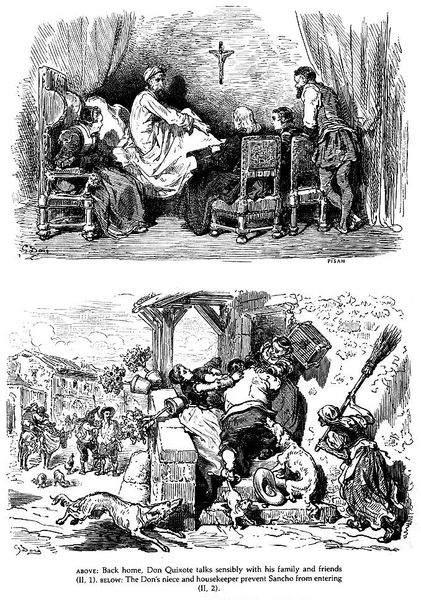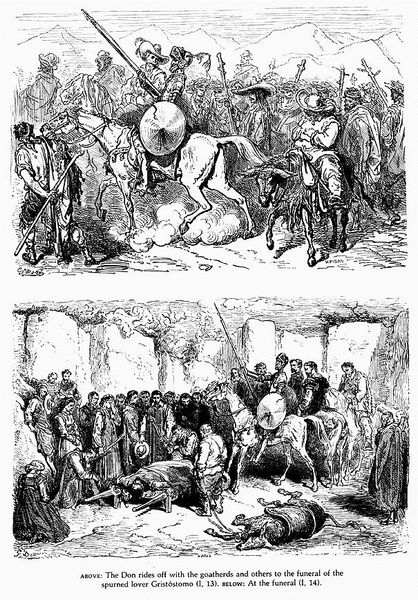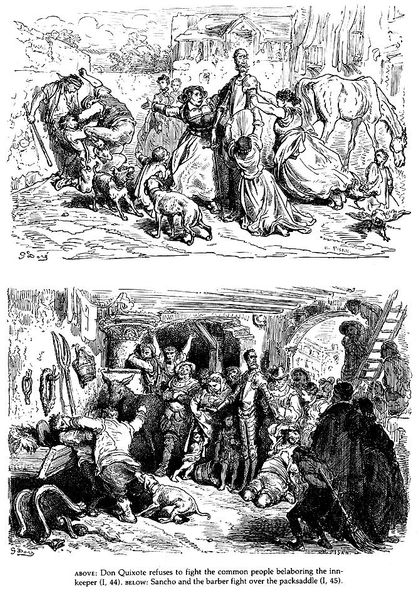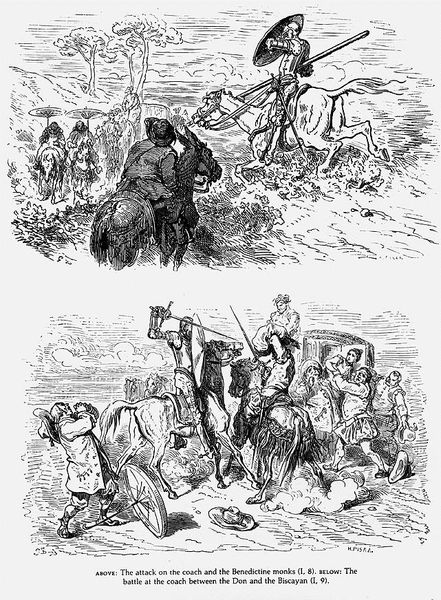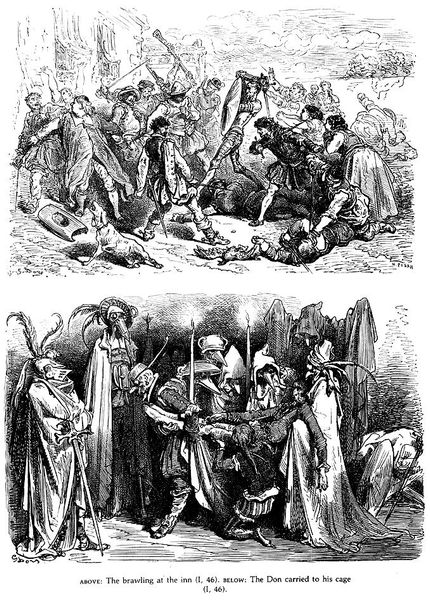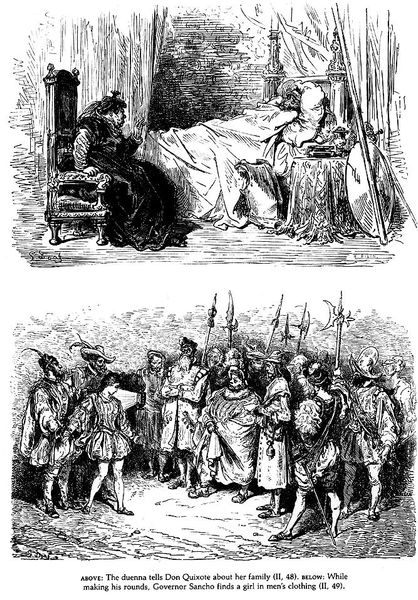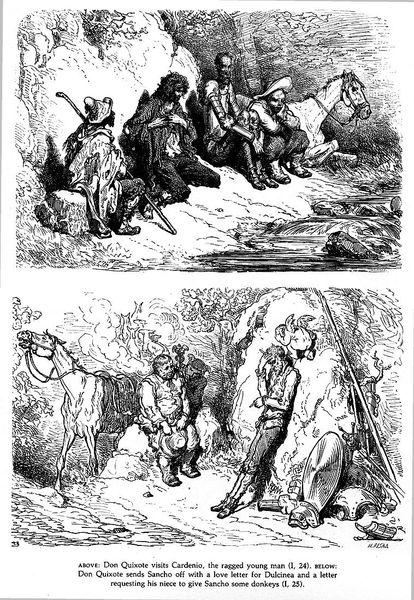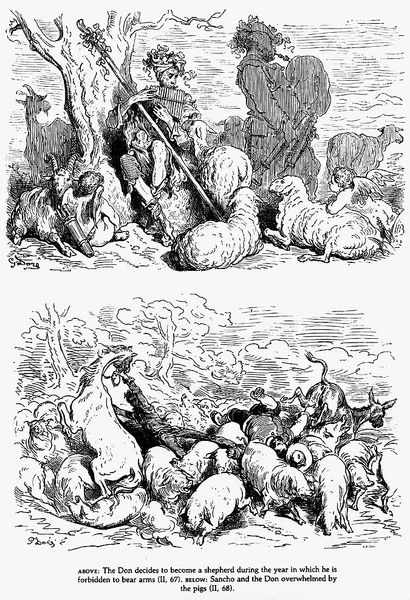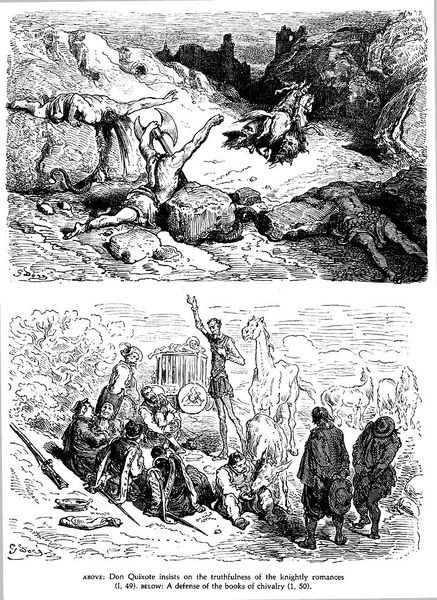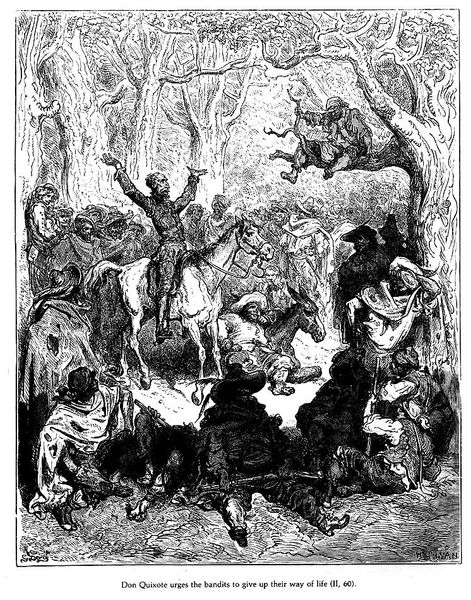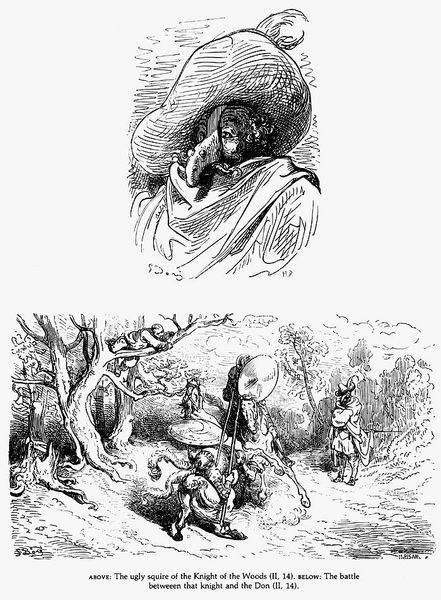
engraving
#
narrative-art
#
figuration
#
romanticism
#
history-painting
#
engraving
Copyright: Public domain
Gustave Doré’s "Don Quixote" is made with ink on paper, a medium conducive to detailed narrative. The material itself might seem humble, yet the artistry lies in the extreme control Doré exerted over it. Consider the lines, etched with incredible precision to create depth and drama. Look at how the density of hatching brings shadows to life, contrasting sharply with stark, illuminated areas. The tangible quality of paper allows for the transfer of the artist's vision, retaining the immediacy of his touch. Doré's skill transforms ink and paper into a vehicle for social commentary. The mode of production here is printmaking, allowing for widespread distribution, which democratizes art. In this way, the artist captures the essence of Cervantes’s masterpiece, but it is also accessible to a wide audience, beyond the traditional art world. Ultimately, Doré reminds us that the value of art isn't solely determined by the cost of materials but by the skill, concept, and social context it embodies, effectively challenging the hierarchy between craft and fine art.
Comments
No comments
Be the first to comment and join the conversation on the ultimate creative platform.
